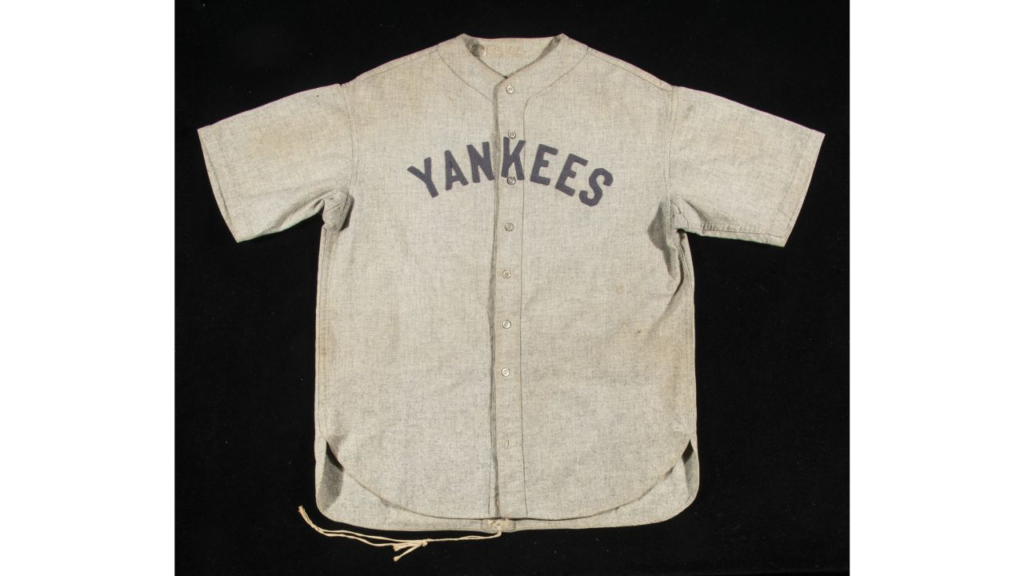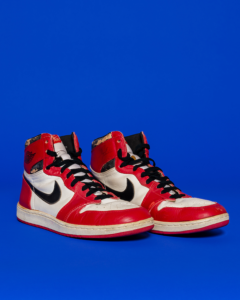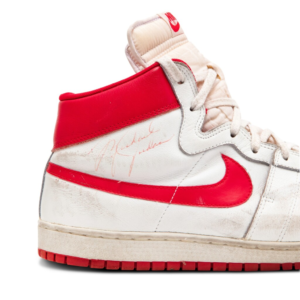Written in consultation with memorabilia expert, Gerard Starkey
While there are many categories of collectibles, encompassing everything from cards, to toys, to comics, one often misunderstood and comparably less “mature” category is memorabilia.
This is because memorabilia, by its very nature, is harder to define, categorize and generalize, and top tier memorabilia is often 1 of 1 (or at least very rare), making it difficult to find other items for the sake of comparison and pricing.
In this guide, we aim to start demystifying and untangling the space, as well as highlight the things that make this category so fascinating and unique as a cultural asset. No two people can have the exact same collection in this space, after all—something that can’t quite be said of cards or video games or toys.
What Is Memorabilia?
In the most general sense, memorabilia can be defined as anything that makes reference to a significant person, event, or an era. Sports memorabilia typically makes reference to athletes, game and competition events, or “great” eras of sports with multiple great athletes or moments.

Source: Hunt Auctions
What Makes Memorabilia Valuable and Different From Other Collectible Categories?
Evaluating memorabilia can be a more complex exercise than evaluating other typical categories of collectibles. A good point of reference is sports cards.
With cards, pristine condition is highly valued and the grade is one of the most important factors in determining a sport card’s value. This is because cards are more or less uniformly mass produced for the purpose of collection, and thus rarity and scarcity are initially determined by what is manufactured.
For memorabilia, it is the piece’s association with a unique person or moment in time that makes it fundamentally desirable and hence, valuable. Thus, memorabilia can encompass a wide variety of items and often no two pieces are exactly comparable. As such, there is no way to grade memorabilia pieces on a straightforward universal scale as there is in cards.
What Are the Key Attributes by Which Memorabilia Is Evaluated?
The memorabilia market is ultimately driven by supply and demand. A piece is valuable because there exists demand for that piece, for any number of reasons. Some of the most common attributes of a piece of memorabilia that might influence its demand are:
Associated athlete’s or era’s historical and cultural significance: Did the athlete, or the era’s athletes, leave a material mark? Perhaps they dominated the sport, changed how the sport was played, or put up great stats. Perhaps they had societal influence beyond their sport, permeating into general pop culture and mass awareness.
Michael Jordan’s 1984 Air Ships, signed and worn in several of Jordan’s early rookie games, set a record for sneakers at auction when they sold for $1.472 million at Sotheby’s. It probably goes without saying that demand for Michael Jordan associated memorabilia is high because of Michael Jordan’s legendary status as a public figure.
The story and emotional resonance that the piece represents: Does the item make reference to a specific moment? A clutch play? A memorable game? Is it directly tied to that story or moment, or does it only make reference of it?
For example, one of Jesse Owens’ Olympic gold medals from the 1936 Summer Games in Berlin set a record for a piece of Olympic memorabilia when it sold for $1.5m in 2019. The medal speaks to a poignant moment in history. The 1936 Berlin Olympic Games were hosted by Adolf Hitler. African-American Owens delivered a spectacular athletic performance as the first American to win four gold medals in track and field, directly challenging Hitler’s ideas of racial superiority as the dictator watched.
In more recent times, it’s estimated that the ball that Tampa Bay Buccaneers quarterback Tom Brady threw to become the first player to throw 600 career touchdowns in October 2021 is worth at least $500,000.
Autographs or signatures and other special features: Does the item bear physical proof of its relation to a special moment or athlete? Autographs are most commonly thought of, but there can be even more specific attributes—think: the piece of glass embedded in the sole of the Shattered Backboard sneakers or in-game markings, wear, creases etc that are absolutely unique to that item.
Note: a common source of confusion and misconception in the memorabilia space is the difference between “game-issued” vs. “game-worn” memorabilia.
A game-worn piece is a piece that was worn by a player in a professional game, making it a 1/1 rare piece.
A “game-issued” usually refers to “Player Exclusive” or “Player Edition” or “PE” (as in, Air Jordan 1 “TYPS PE”). These pieces were designed for a specific athlete, typically for use in-game and usually featuring special colorways, sizing, and cut, customized to the preferences of the player.
What many don’t realize is that not all PEs pieces end up being game-worn, and it could even be argued that not all PE items are actually “game-issued” — that is, issued for a particular game (rather, they are issued for a particular player to use for any games).


Source: Sotheby’s
Rarity: While memorabilia is usually by definition not mass produced, there are still “populations” of some pieces, as multiple copies of certain items are often produced for athletes—especially pieces produced for gameplay, but we note we are talking about 10-20 items produced rather than 500-1000.
Authenticity: Of course, all of the above attributes are dependent on the item truly bearing its purported relation to the person, event, or era.
Photo matching is the gold standard here.
The theory behind photo matching is that no two game-worn sneakers are alike. Based on wear during gameplay, each shoe’s signs of use make it distinct from all other game-worn sneakers. It is increasingly important to photo match for the rarest shoes, as it verifies that a specific pair of shoes were worn during a specific game or event in the player’s career. This has the potential to increase the value of a shoe significantly.
Photo matching involves a forensic analysis of images of the shoes against images that were taken at a specific game or event. Experts look at scuffs, creases, and any marks that would help differentiate the shoe from other pairs.
An item is conclusively photo matched when we are able to attribute it to a specific moment in time using images and video footage, and lining up the in-game markings, creases, production faults on the actual item to these images/videos.
Can Sports Memorabilia Increase in Value if Their Value Is So tied to the Past? What Are the Catalysts in This Category?
While there are many differences between sports cards and sports memorabilia as items, one big similarity is that both appeal to what we love about sports—where larger than life moments can occur unpredictably on the biggest stages in the world at any time and moment. These moments serve as catalysts for items associated with the sport or the relevant athlete, like memorabilia.
In addition, truly legendary people, memories, and moments in sports tend to “age well,” not unlike vintage wines—that is, they tend to gain in historical significance and reverence over time. Thus, one might argue that the value of memorabilia bears a unique longevity in being more directly connected to the specific athlete or moment than something a bit more removed like a sports card.
Moreover, catalysts can continue to occur over time for such storied people or events. For example, The Last Dance documentary series, which debuted on both ESPN and Netflix in 2020, brought Michael Jordan’s basketball career back into the public consciousness and reignited interest in the athlete. Prices for Michael Jordan associated memorabilia subsequently increased.
These extraordinary athletes and stories leave legacies that continue to inspire and serve as important reference points for the next generations of greats.
In Sum
The most important thing to understand when evaluating any given piece of memorabilia is exactly what context the object was used in or produced for. This is different from many other collectible categories, where pieces can gain value simply by being rare for their graded condition.
Here is how we would classify the different types of memorabilia and which attributes are key to their value:
*Rarity is not checked off for game used and photo matched memorabilia, because these items are inherently 1 of 1.
**Irrefutable authenticity is the primary attribute that distinguishes photomatched memorabilia from game used memorabilia.

